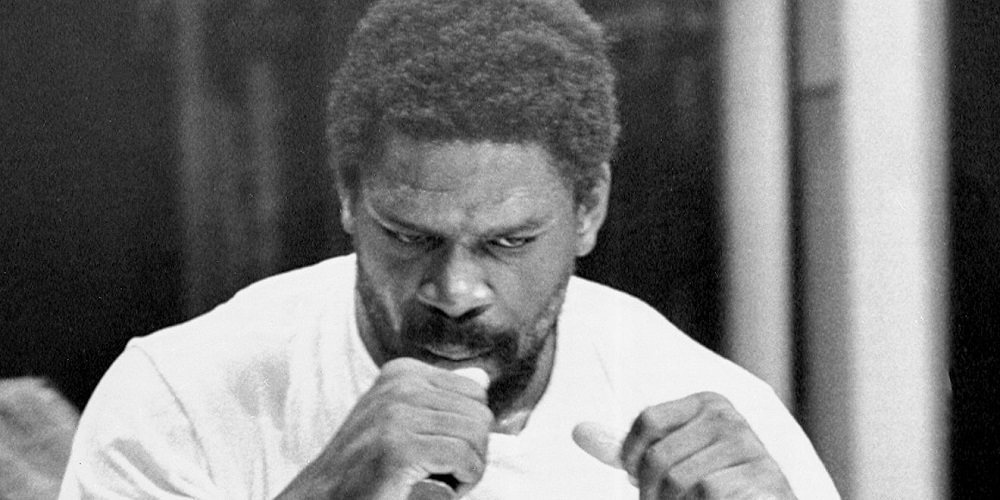When you’ve been sentenced to 15 years in prison in your youth and stabbed in the same prison to the point of being declared dead twice on the operating table during a seven-hour surgery, the punches of Muhammad Ali, Earnie Shavers, and George Foreman can’t scare you too much. It’s no surprise, then, that Ron Lyle, a true menace in the heavyweight division during the glorious 1970s, faced the big names of that golden era without any reverence, battling toe-to-toe and delivering unforgettable thrills to fans. Exactly 13 years after his passing, we take a look back at the sporting career of the formidable American puncher.
A Talent Born Behind Bars
The third of nineteen siblings, Lyle got into trouble with the law early on, associating with the dangerous world of youth gangs in his Denver neighborhood, where his family had moved when he was a teenager. One of many clashes with rival gangs ended tragically, and although Ron always claimed he didn’t pull the trigger, he was sentenced to a minimum of 15 years in prison at just 19 years old. One drama after another followed: an altercation with a cellmate, a potentially fatal wound, and a desperate surgery involving massive transfusions. But from the darkest depths emerged the light of a possible turnaround: during the long isolation following his surgery, Lyle passed the time doing push-ups, sit-ups, and other physical exercises, beginning to shape what would become a brutal sixteen-ropes puncher. The prison’s athletic director, Cliff Mattax, convinced him to try boxing, and it was a turning point: of the many matches organized among inmates, Lyle lost only the first, becoming unstoppable thereafter.
One KO After Another Until the First Setback
Paroled in November 1969, Ron got a job as a welder while simultaneously beginning his boxing journey. He had 29 amateur bouts (the ones in prison weren’t officially counted), winning 25 with 17 by KO, but he knew from his debut that his destiny lay in the professional ranks. In the pros, he started with a streak of 19 consecutive victories, 17 of them by stoppage, establishing himself as one of the most promising heavyweights of the early ’70s despite his late professional debut at age 30. Observers were impressed by his aggression, devastating power, and indomitable courage, but the first cold shower was just around the corner: in February 1973, at Madison Square Garden, Lyle faced the more experienced Jerry Quarry and suffered a hard-fought points loss. Against a technical, seasoned opponent, Lyle’s wild, unfocused fury wasn’t enough—a lesson that would prove valuable for broadening his arsenal and attempting to climb the rankings again.
Ron Lyle’s Golden Year: Bonavena, Ellis, and Kirkman on the Road to Ali
In terms of results, 1974 was by far Lyle’s best year. One after another, credible contenders for the world title—Oscar Bonavena, Jimmy Ellis, and Boone Kirkman—were tamed by the American. The Argentine Bonavena, as usual, put up a fight but couldn’t close the physical gap. Ellis was decisively defeated in the sweltering heat of Denver’s Coliseum, where temperatures reached nearly 40°C, while Kirkman was stopped in the eighth round, his face a bloody mask. The impressive nature of these three brilliant victories was such that, despite a subsequent setback against the elusive Jimmy Young—whose style posed an insoluble riddle for Lyle—the opportunity to fight for the world title soon followed. His career-defining match against Muhammad Ali took place in May 1975 and ended in a cruel disappointment: ahead on two of the three official scorecards after ten rounds, Lyle was caught by a sudden right hand to the chin just as he seemed to have found the key to an incredible upset. Bombarded with punches in a passive defense, he was stopped by referee Ferd Hernandez, watching his dream slip away.
The Unforgettable Wars with Shavers and Foreman
The bitter loss to Ali didn’t deter Lyle from his goal. Knowing that at 34 he couldn’t afford delays, he accepted thrilling bouts to regain his place among the elite. His ferocious clash with Earnie Shavers remains one of the most violent heavyweight matches in history. The two warriors exchanged wild blows in breathtaking exchanges. While Lyle miraculously recovered from a devastating knockdown in the second round, Shavers couldn’t do the same and was stopped in the sixth, completely exhausted. Equally spectacular was the subsequent fight against former champion George Foreman, who was attempting a comeback after his shocking loss in the famous “Rumble in the Jungle.” Foreman and Lyle staged five heart-stopping rounds, knocking each other down multiple times and sending the audience into a frenzy. The fourth round, in particular, saw Big George hit the canvas twice while delivering a knockdown himself, earning its place as one of the greatest rounds in history. This time, it was Lyle who fell first, beginning a slow but inevitable decline.
There were no more triumphant moments in the career of the formidable American, who retired in 1980 after a humiliating first-round defeat at the hands of rising star Gerry Cooney. Noteworthy, however, was his brief comeback 15 years later, hoping for a rematch with his old rival George Foreman, who had recently achieved the incredible feat of becoming world champion again at 45. When that possibility vanished, Lyle retired for good.
The unforgettable warrior passed away in his native Denver at the age of 70, but his incredible redemption story will live on forever.

